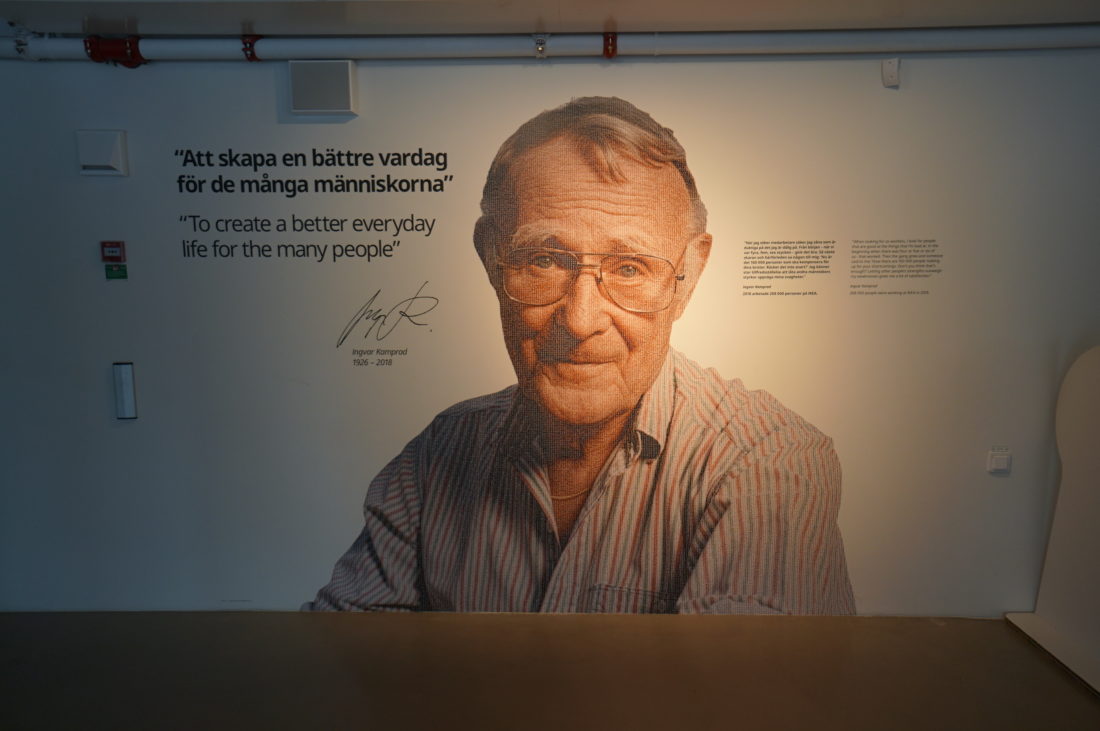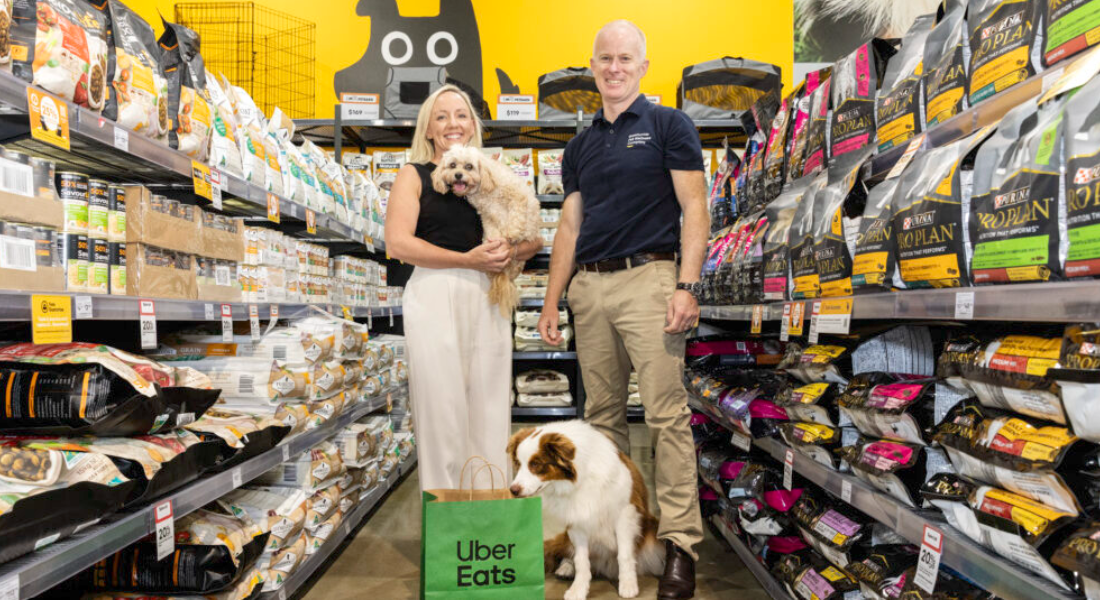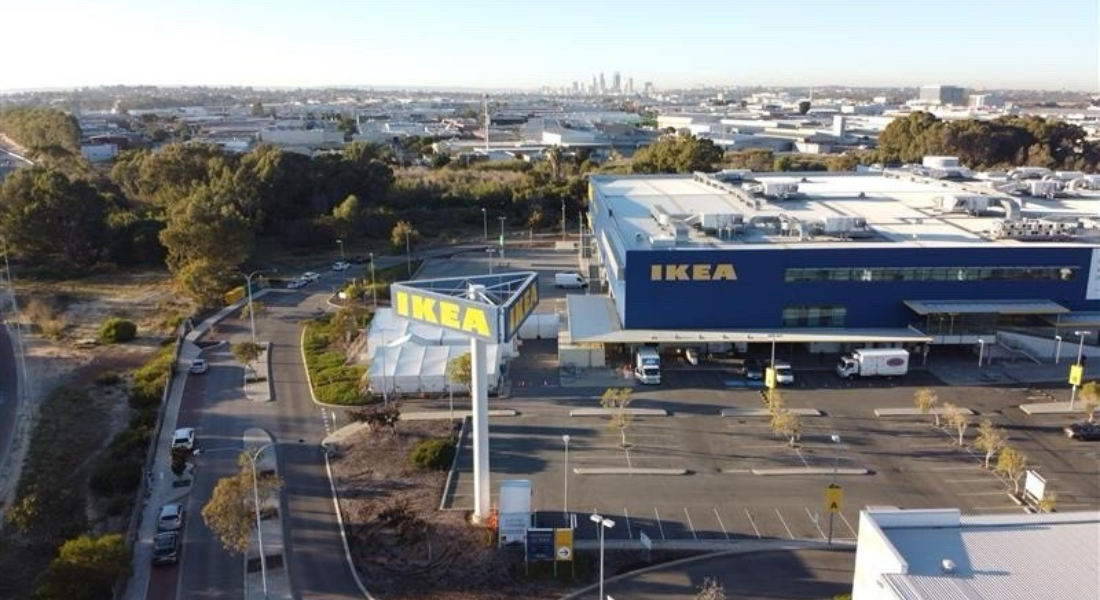The Key to IKEA’s Successful Culture

IKEA’s culture is a movement informed by its values. Their shared values bind over 211,000 co-workers, who live the ideology and take it beyond the workplace.
Since it was founded in 1943 by Ingvar Kamprad, IKEA seeks to achieve their mission “to create a better everyday life for the many people” by offering an extensive range of well-designed, functional home furnishing products at prices so low most people can afford them.
Lowering costs and making goods accessible is a key focus. IKEA achieves this by using cost-effective materials, using flat pack technology for cheaper transport and customer self-assembly to keep labour costs down. All this is done with an uncompromising commitment to quality.
IKEA’s Scandinavian designs also help keep costs down as simple and minimalist designs are generally faster and easier for mass production.
At the entrance of IKEA Museum in Älmhult, the home and birthplace of IKEA, there is a photo of Ingvar Kamprad. It seems like a regular enlarged portrait, but when taking a closer look, it is made up of 5000 tiny portraits of his co-workers. IKEA prefers ‘co-worker’ to ‘employee’, which is much more egalitarian and collegial. The photo expresses a simple message: IKEA is not a one-man show, it is a team effort. Unsurprisingly, IKEA is the largest employer of Älmhult residents and its surrounds.
There are 8 core values:
- Togetherness
- Cost-consciousness
- Renew and improve
- Give and take responsibility
- Caring for people and planet
- Simplicity
- Different with a meaning
- Lead by example
These values resonate in all aspects of IKEA, including their Democratic Design test where products and solutions must meet all five dimensions of design: form, function, low price, sustainability and quality.
“Everyone we spoke to and/or presented to us seemed to be aligned on the culture and values of IKEA,” observed Michael Cherubino, Executive Director of Property and Business Development, Adairs.
“They understood clearly what they want to deliver to their customers. It is impressive for such a big business,” said Mr Cherubino.
LFRA Study Tour members met Per-Olaf, who has been working at IKEA Museum for 6 years but began as a forklift driver at an IKEA distribution centre. Jörgen Olsson started his IKEA career in 1983, and Regina Munthe at the Test Lab worked for the company exclusively for over 30 years.
It is not uncommon for IKEA co-workers to have lengthy careers. As a result of its expansion into different cities and areas of expertise, IKEA is able to retain co-workers by providing them opportunities to learn and grow.
The company’s social environment has a tremendous impact on productivity and plays a role in promoting their workplace culture. As a part of the Overseas Study Tour, LFRA members were given exclusive access to IKEA’s global head office.
IKEA’s collegiate culture is enhanced by the layout and functionality of their workspace.
Some modern workplace concepts were familiar: hot-desking, standing desks, lots of indoor plants and open planning to stimulate interaction and collaboration.
There was a balance of formal meeting rooms, informal meeting spaces like couches, and ‘high focus areas’ to allow silent, alone work.
Fika, a Swedish tradition of taking coffee breaks during the day, is highly encouraged with many coffee machines at every level throughout the building. There is also a large shared space near the main kitchen where co-workers can catch up.
Office furniture is regularly updated so co-workers can look, feel, and learn about new IKEA products. Different lighting and levels of illumination is used across the workspace, influencing mood and productivity.
An interesting concept, and one that is uniquely IKEA, were their meeting cubes. Each cube is the size of a small shipping container erected on wooden pallets. The cube fits a maximum of four people. Despite its rudimentary nature technology is no problem. If there was a Skype meeting, television screens are wheeled across to close off the opening of the meeting cube, giving meeting participants privacy.
LFRA Overseas Study Tour members were also given an exclusive tour of IKEA’s Tottenham Court Planning Studio, which opened in October 2018. Unlike the conventional Large Format Retail model, the Planning Studio is only 350m2 and is “dedicated to kitchen and bedroom inspiration where you can find home furnishing advice and expertise to help design your ideal space”[i].
The IKEA Tottenham Court Planning Studio offers customers 1-on-1 experience and quiet ambience. A recent in-store survey showed that customer experience was exceptional, with helpfulness rating 4.6 out of 5 and knowledge rating 4.5 out of 5. This concept appears to be a new way for IKEA to engage commuters and working professionals in a CBD environment.
IKEA’s culture is successful because it is embedded in their people and business globally- in their language, products, workplace and beyond. Although its key values have not changed in the past 76 years, IKEA’s search “to create a better everyday life for the many people” leads them to new products, solutions, and store formats.
This article is a part of a 10-segment series covering the 2019 LFRA Overseas Study Tour.




